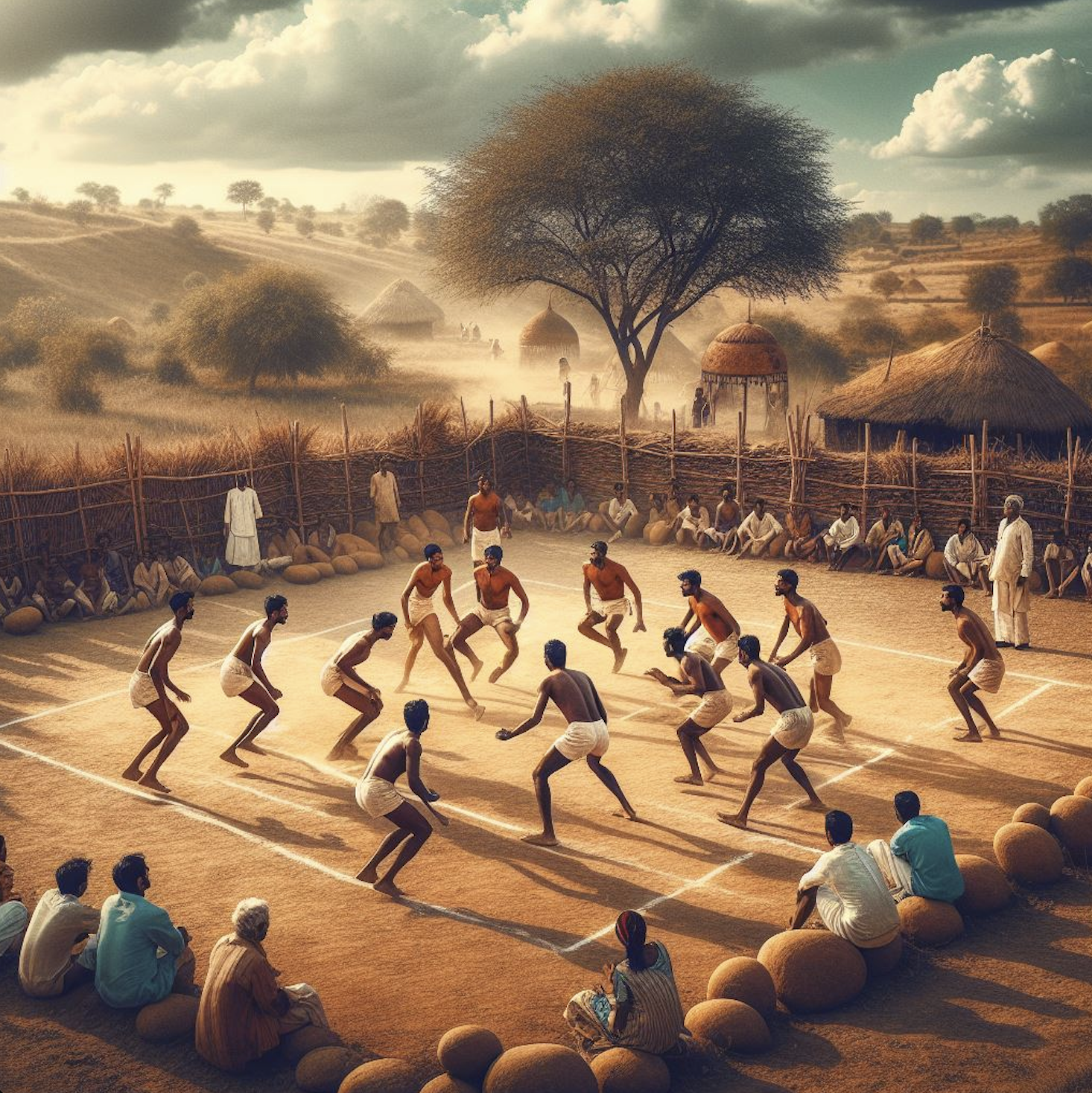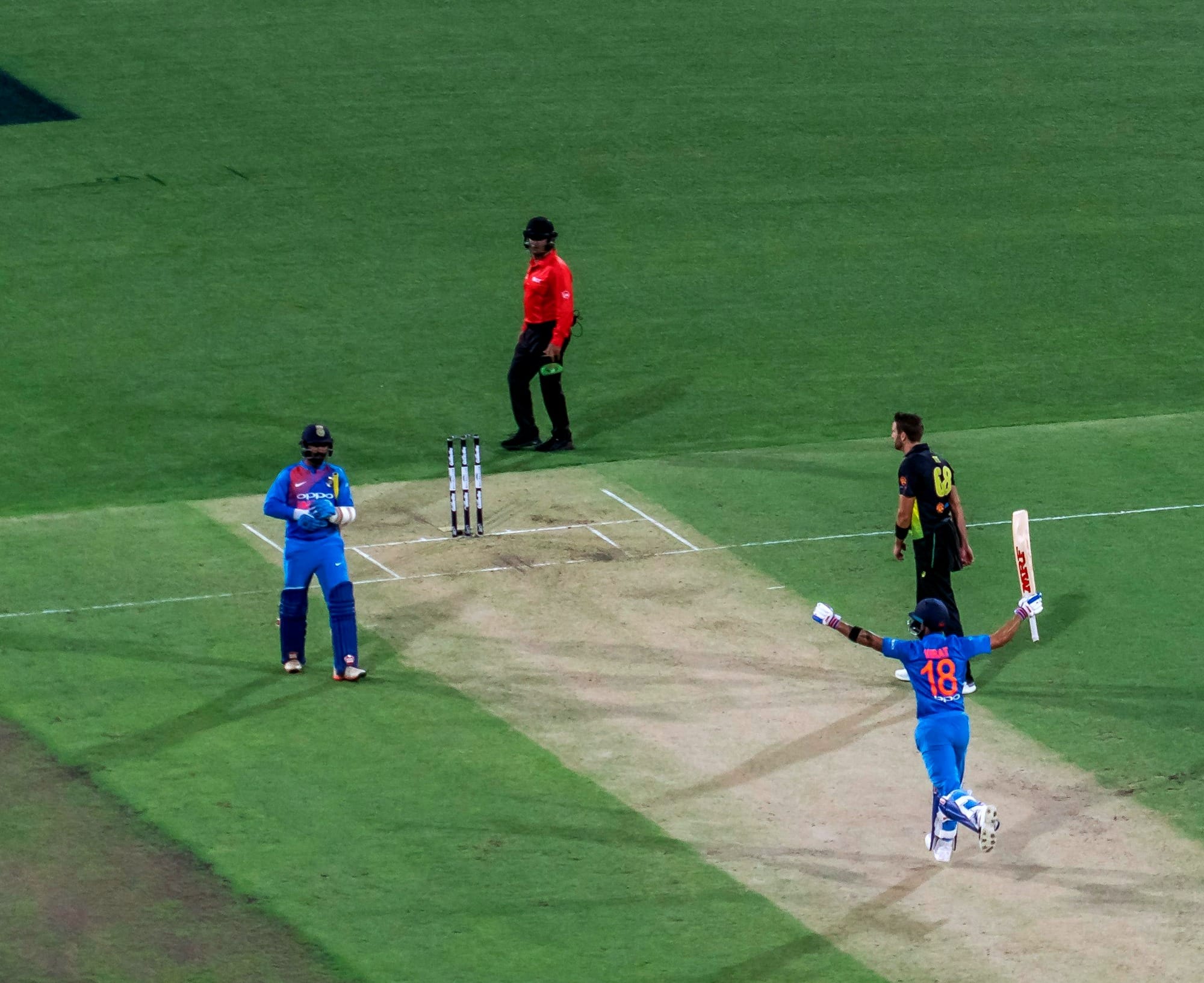As a performance psychology consultant with a passion for the intersection of culture and athletic performance, I'm perpetually drawn to unique disciplines that redefine the boundaries of physical and mental exertion. Today, I'm eager to introduce you to one such captivating sport: Kabaddi
A Journey Through Time: The Ancient Roots of Kabaddi
Kabaddi boasts a rich tapestry woven over millennia. Originating in ancient India, Kabaddi boasts a rich history that stretches back over 5,000 years, with some legends even hinting at its recreational enjoyment by figures like Gautam Buddha. Traditionally known by various names, Kabaddi transcended mere entertainment, evolving into a test of strength, agility, and strategic prowess. Practiced in villages and towns across the Indian subcontinent, it fostered a sense of community and served as a valuable training ground for young warriors.

The Essence of Kabaddi: Unveiling the Rules of the Game
Imagine a sport that seamlessly blends elements of tag, wrestling, and rugby. That, in essence, is Kabaddi. Two teams of seven players each face off on a rectangular court, typically measuring 13 meters by 10 meters. The core objective? To amass points by sending a single designated player, termed the "raider", into the opponent's territory, known as the "opponent's court" or "kabaddi court".
The raider's mission is both thrilling and challenging: To cross the center line and venture into the opponent's court, tag as many defenders as possible, and return to either touch the centre line or cross into their own territory — all within 30 seconds whilst holding their breath and chanting "kabaddi, kabaddi, kabaddi". There's a crucial twist, however. The chant serves as a ticking clock, a constant reminder of the raider's dwindling oxygen supply. Their breath acts as a lifeline – the chant must continue throughout their foray into the opponent's court. If it falters, the raid is deemed unsuccessful.
The defenders, on the other hand, form a formidable human wall within their court. Their primary objective is to thwart the raider's attempts by tackling, pinning them down, or forcing them out of bounds before the chant ends. If a defender successfully tackles the raider or intercepts their touch, the raider is declared "out" for a brief period. The key lies in strategic teamwork – defenders must anticipate the raider's movements, coordinate tackles effectively, and prevent them from escaping with a touch.
Beyond the Physical: The Mental Mastery of Kabaddi
Kabaddi transcends the realm of mere physical prowess. It's a captivating battle of minds, demanding strategic brilliance and unwavering mental fortitude. Raiders employ a masterful repertoire of dodges, feints, and deceptive manoeuvres to outwit defenders. They assess the defensive formation, identify weaknesses, and exploit them with lightning-fast agility. Anticipation is paramount – raiders must predict the defenders' reactions and plan their next move accordingly.
The defenders, on the other hand, hone their ability to read the raider's body language and anticipate their movements. Effective communication and coordinated tackles are crucial for success. They must strategize as a unit, forming a cohesive defensive wall that anticipates and thwarts the raider's every attempt. The constant pressure of the ticking "kabaddi" chant adds another layer of mental strain. Raiders need to maintain sharp focus and control their breathing under duress, while defenders must stay calm and collected amidst the frenetic energy of the raid. In my experience as a performance psychology consultant, I've witnessed firsthand how resilience and the ability to perform under pressure are just as essential for Kabaddi mastery as raw athleticism.
The Art of the Raid and the Defense in Kabaddi
Just like any other sport, Kabaddi thrives on strategic brilliance. Both raiders and defenders meticulously plan their approaches for each raid.
Raiding Strategies: A Dance of Deception
Raiders are the offensive spearheads of their Kabaddi teams. They employ a diverse arsenal of raiding strategies to outfox defenders and score points. Some common tactics include:
- The "Do or Die" Raid: This high-risk, high-reward strategy involves the raider venturing deep into the opponent's court, aiming to touch as many defenders as possible before sprinting back. Success in a "Do or Die" raid can significantly swing the momentum in a team's favour.
- The "Touch and Go" Raid: This strategy prioritizes quick, calculated touches. The raider darts into the opponent's court, swiftly touches a defender, and escapes back to their side before the chant ends. This tactic is effective for accumulating points steadily and keeping the pressure on the opposing team.
- The "Corner Raid": This strategy focuses on exploiting the corners of the opponent's court, where defenders might be slightly less guarded. The raider utilizes agility and swift movements to manoeuvre around defenders and score points.
Defensive Strategies: A Wall of Resilience
Defending in Kabaddi is as crucial as raiding. Defenders form a formidable unit, employing various tactics to counter the raider's manoeuvres and prevent them from scoring. Here are some key defensive strategies:
- The "Block": This basic tactic involves a defender using their body to physically obstruct the raider's movement, making it difficult for them to touch other defenders.
- The "Ankle Hold": A well-timed ankle hold can effectively immobilize the raider, preventing them from escaping back to their court. This tactic requires agility and precise timing.
- The "Dash": Defenders often employ a coordinated "dash" to surround the raider and restrict their movement within the opponent's court. This strategy requires strong communication and teamwork.
- The "Super Tackle": A rare but exhilarating feat, a super tackle occurs when the defending team manages to restrain the raider with three or fewer defenders. This not only outs the raider but also awards the defending team two points instead of the usual one.
Kabaddi Styles
There are two major styles of kabaddi:
- Punjabi Kabaddi (Circle Style): Played on a circular field outdoors, this traditional form of kabaddi is deeply rooted in Punjabi culture. It’s a raw, earthy version where players grapple with each other, showcasing their strength and agility.
- Standard Kabaddi (Indoor Style): Played on a rectangular court indoors, this style dominates major professional leagues and international competitions like the Asian Games. Here, strategy, teamwork, and lightning-quick raids take center stage.
Essential Kabaddi Gear: Ready for the Raid
While Kabaddi's beauty lies in its accessibility, requiring minimal equipment, there are a few key elements that enhance player safety and performance:
- Kabaddi Kit: Players typically wear a lightweight uniform, often made of synthetic materials like polyester or nylon. This allows for freedom of movement and breathability during the intense bursts of activity. Additionally, defenders sometimes wear padded vests for extra protection during tackles.
- Kabaddi Mat: Matches are played on a mat that provides cushioning and prevents injuries. The mat is typically made of high-density foam or rubber and is marked with clear boundary lines to define the playing area.
- Grips: Players often wear specialized Kabaddi grips to enhance their hold during tackles and prevent injuries. These grips are made of breathable, moisture-wicking materials and provide extra traction on the opponent's uniform.
- Mouthguard: While not mandatory, mouthguards are highly recommended for Kabaddi players, especially raiders, to protect their teeth and lips from potential injuries during tackles.
Beyond the Arena: The Cultural Significance of Kabaddi
Kabaddi transcends the realm of mere sport. It's deeply embedded in the cultural fabric of the Indian subcontinent, fostering a sense of community, discipline, and physical fitness. Traditionally, Kabaddi was played in villages and towns, serving as a training ground for young men to develop strength, agility, and strategic thinking.
The sport also holds significance in promoting teamwork and camaraderie. Kabaddi teams function as cohesive units, relying on clear communication, coordinated manoeuvres, and unwavering trust in each other to achieve success. This fosters a strong sense of team spirit, social cohesion, and sportsmanship among players.
In recent years, Kabaddi has become a powerful symbol of cultural pride for the Indian diaspora around the world. Professional Kabaddi leagues feature players from various countries, further strengthening cultural ties and promoting mutual understanding.

The Future of Kabaddi: A Sport Poised for Greatness
The past few decades have witnessed a phenomenal surge in Kabaddi's international appeal. The Pro Kabaddi League, a professional league established in India in 2014, has been a game-changer. This televised extravaganza has garnered a massive following, showcasing Kabaddi's electrifying action, strategic depth, and cultural heritage to a global audience. The league features top athletes from India and across the world, drawing in millions of viewers and propelling Kabaddi into the mainstream sporting spotlight. Its inclusion in the Asian Games since 2010 further underscores its growing stature in the international sporting landscape.
With its blend of physical prowess, strategic depth, and cultural heritage, Kabaddi is poised for continued growth on the international stage. The sport's governing body, the International Kabaddi Federation (IKF), is actively working to promote Kabaddi globally, establishing national federations and organizing international tournaments. As the sport garners more viewership and participation, we can expect further refinements to the rules, strategic innovations, and the emergence of even more captivating Kabaddi variations.
Kabaddi's journey, spanning millennia, is a testament to its enduring appeal. From its humble beginnings in rural villages to its current status as a globally recognized sport, Kabaddi has captivated audiences with its unique blend of physical exertion, strategic brilliance, and cultural significance. The sport continues to evolve, attracting new players and enthusiasts worldwide. As the sport continues to garner recognition, we can expect even more exciting developments – from innovative training techniques to the emergence of powerhouse Kabaddi nations on the international stage.
Whether you're a seasoned athlete seeking a new challenge or a curious spectator eager to discover a captivating sport, Kabaddi offers a unique and rewarding experience. So, the next time you're seeking a sport that offers a thrilling blend of athleticism, mental fortitude, and strategic brilliance, look no further than Kabaddi. This ancient game from India is more than just a sport – it's a mental, physical, and cultural phenomenon waiting to be explored.














Discussion